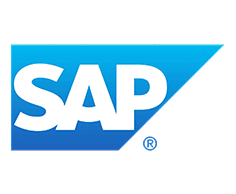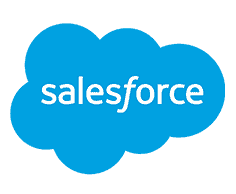We had already discussed in one of our previous posts the difference between email marketing and marketing automation. What we can still say about this is that many people still confuse the meaning and usage of these two methods. Sending a monthly newsletter around specific events or receiving a discount voucher for being loyal to the brand. These are all important actions, but email marketing is so much more! Today, we will explore the methods, tools, and benefits of an often underrated activity with potentially high returns.
Email Marketing: meaning
Marketing is no longer about what you can produce, but about what stories you can tell. Seth Godin
The great Godin had stated it, and never before has it been more true: immersing the user in the story, making them feel like an integral part of an achievement rather than a significant change, is revealed as the favorite activity of marketing

Very few still know its definition, but email marketing today requires a meticulous ability to foresee both its strengths and weaknesses. Because today, email marketing requires strategy, clear objectives, and appropriate tools. But let’s start with its definition. Email marketing is, on one hand, the use of emails for product promotion, and on the other, a means to establish a more lasting relationship with potential and/or previously acquired customers. Emails must always have an original and, above all, informative character for the target audience they address: users who perceive the value of the information will certainly be inclined to read them, share them, and are more likely to contact the brand. Specifically, there are various types of emails to send to your customers. Below, we will try to explain each of them one by one.
Email marketing: how to do it
It seems like something extremely simple. In reality, it requires the ability to summarize the most important topics that have represented the company during the month in question. The email messages to be sent to users can be classified as: DEM, Newsletter, and automation.
What is a DEM?
A DEM (Direct Email Marketing) is an email message sent to a pre-established mailing list. DEMs are typically used to deliver commercial communications. A fitting example is certainly inviting the user to take actions in order to receive a benefit or promote new products, discount codes, limited-time offers, etc.
What is a newsletter
Newsletters, on the other hand, as the word itself suggests, are defined as an aggregation of news, which is why they have a more editorial focus. This type of communication is used by all those organizations that have good content to share: not only news outlets but also companies with a blog or professionals who want to spread knowledge on topics related to their services.

Implicitly, the sending of emails must be done to a contact list that needs to be segmented and verified to assess the quality of the emails sent. That said, the sending of messages could be automated. These are the so-called automation flows, which allow for ‘nurturing,’ meaning fostering curiosity and authority towards the brand. The ultimate goal? Always and inevitably the conversion of the user. And if marketing automation is the puzzle that contains a piece called email marketing, the latter presents itself as a world with complex yet fascinating logic to discover and learn to use. The newsletter trend, in particular, is growing significantly: just think that most of the emails sent fall under the newsletter category
Email Marketing: who are its users
People benefiting from email marketing activities come from various sectors. Editorial websites, for example, certainly have rich and highly followed newsletters, as do consultants and professionals in vertical niches. On the other hand, email direct marketing (DEM) is an excellent tool used by eCommerce businesses, who can also rely on the power of automation to engage users in a virtuous cycle of re-purchase and rewards through discounts and personalized offers.
Email marketing: the goals

After exploring the various types of emails as well as the target audiences they address, let’s move on to the goal that drives the use of email marketing within a business strategy. The goal of email marketing, in fact, changes depending on the recipient of the message. Let’s provide some examples. A customer who has already made a purchase should continue to be informed and pampered with rewards, discount vouchers; whereas a customer who has not yet converted should be constantly stimulated through the use of storytelling, a discipline not only capable of ‘telling stories’ but with a strong tendency to foster empathy in such a way that they become ‘hungry for knowledge.’ This will inevitably lead to the desired action.”
Email marketing: metrics to analyze
We have defined the meaning, goals, users, and types of newsletters. Well, these metrics alone are not enough to do well and continually improve. Other metrics are needed, capable of analyzing a large amount of data and keeping track of the sending of each new communication. Below, we list the essential ones, namely:
- Open Rate (OR), meaning the overall open rate (including multiple opens performed by the user);
- Unique Open Rate (UOR), meaning the ‘unique user’ version of the previous data;”
- Click-Through Rate (CTR), one of the most important metrics, indicating the number of clicks on the CTAs contained in the email, thus reflecting the effectiveness of the message;
- Click-Through Rate (CTR), one of the most important metrics, indicating the number of clicks on the CTAs contained in the email, thus reflecting the effectiveness of the message;
- Unsubscribe Rate (UR), meaning the rate at which users unsubscribe from the newsletter;
- Conversion Rate (CR), such data can be monitored and viewed through the analytics of your website. Therefore, from the email, it is possible to understand if the user has completed the desired action.
Last but not least, the spam score, which indicates the number of emails that ended up in spam.
Email marketing: the benefits of a correct strategy
It may seem complex, almost unachievable, but managing to set up an email marketing strategy that covers all the points mentioned above leads to a gain, not only financial but also in brand awareness and, therefore, in image.

The benefits of this activity are indeed many. Among them:
Low effort and excellent ROI. This justifies the costs involved in choosing the platform capable of handling email marketing management within the company.
Measurability of actions and messages (the analysis of metrics is proof of this).
High level of personalization and speed in communicating the message. Consumers, who generally enjoy receiving newsletters from brands they appreciate, not only feel the exclusivity of the message being sent but also a sense of immediacy that bypasses the time they would have spent searching for the best offer on the desired product/service. The perception of having summarized everything the user was looking for in a single email is truly invaluable! This is why the work of crafting the message requires thorough study and maximum attention based on the goal the company set at the outset.
Email marketing: new trend 2022

We’ve already talked about KPIs and the importance of monitoring after sending the email to the user. All of these are certainly necessary, but there is one without which we wouldn’t know how interesting the content sent is to the reader: it’s called the response rate. In recent years, given the flood of information we are exposed to daily, it has become increasingly difficult to capture the user’s attention and guide them to a reaction. This premise is necessary to say that today companies need to personalize email marketing campaigns based on the target, also thanks to marketing automation tools capable of reaching the user at the right moment, beating the ruthless competition in speed.”
Conclusion
In this article, we have tried to explain as comprehensively as possible what email marketing means, exploring its many facets. This is just the beginning of a journey through the processes that lead to the success of a type of communication designed not only to survive but to evolve over time. Don’t miss the next “episodes” dedicated to the topic! In our next blog post, we’ll cover everything you need to know about improving the performance of email marketing campaigns. Stay tuned!
FAQ
1.How do you do email marketing?
-Segment the mailing list;
-Check the quality of the emails in the mailing list;
-Use marketing automation;
-Pay attention to mobile optimization;
-Personalize the emails;
-Focus on call-to-actions;
-Always include an unsubscribe link;
-Choose the email wording carefully to avoid being marked as spam.
2.What is the purpose of email marketing?
Email marketing is a continuously growing form of marketing, essential for communicating your brand’s values and building a direct and trusting relationship with your customers and leads.
3.What are the advantages of email marketing?
Ease of creating a database.
Instant communication.
Ease of tracking.
Message personalization.










